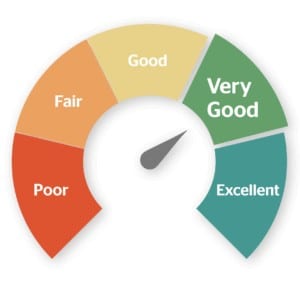Consumer Debt in Canada
When you are facing consumer debt challenges, begin by identifying the type of debt and how it may be affecting your credit.
Though everyone has a general grasp of the concept of debt, many do not fully understand the type of debt they owe. So, let’s start by defining debt. In layman’s terms, debt is money owed to a lender for purchases made using a line of credit. Consumers may use their line of credit to purchase consumable goods that do not usually appreciate in value. In contrast, business owners usually take on debt for investment purposes.
If you’re stuck in a cycle of debt, we can help. Talk to a trained credit counsellor to discuss your options for relief.
Types of consumer credit
First, let’s distinguish the different types of consumer credit and debt. Understanding the difference between each type of credit will allow you to understand and manage the debt it creates successfully. Additionally, note the differences in how you make payments each month.
Installment credit
Installment credit is a type of loan that extends borrowers a fixed amount of funds in a lump sum that gets paid back over a set length of time. This lets borrowers know how many monthly payments they will have to make, as well as knowing the amount of each monthly payment.
Examples: Car loans or mortgages
Revolving credit
In contrast, revolving credit is a non-installment loan that allows a borrower to access credit as the need arises. You have an open credit line that you can borrow from at any time. So, since you will likely not be spending a fixed amount on your credit line every month, the payments can change from month to month. Your credit limit will remain the same even as you make payments towards your credit account. You must make at least the minimum required payment each month.
However, being able to draw from the account as needed comes with a few hitches—you will generally have lower borrowing amounts and higher interest rates. And should you fail to make timely payments, your interest rates can and will increase.
Examples: Credit cards and lines of credit
Secured credit
The main distinction to familiarize yourself with is that secured credit requires collateral. Therefore, if a borrower does not repay their lender, the collateral that was used is legally allowed to be seized by the lender.
Examples: Mortgages, car loans, and secured credit cards
Unsecured credit
Conversely, unsecured credit requires no collateral. Hence there is no property that can be seized if you fail to repay the debt unless the creditor obtains court order against you.
And although credit cards are generally forms of unsecured credit, certain credit card companies do offer secured credit card lines.
So, say, for example, you put down a $1,000 deposit, you will then have a $1,000 credit limit. Therefore, if you fail to make your payments the lender will seize the $1,000 or the relevant portion, as a security deposit to cover your debt.
Examples: Unsecured credit cards or unsecured personal loans
Do you still have questions about how consumer credit works? Ask our financial coaches now to get the information you need.
How interest rates work
Even though interest rates are calculated as annual interest rates (AIR), most credit card companies will calculate interest daily and add the charges to your account per statement period.
For example:
If you have a 12.99% AIR with an outstanding balance of $500, you first calculate the daily interest rate and multiply that percentage against the outstanding balance.
To calculate the daily interest rate divide the AIR by 365 days, which comes out to 0.035% with a daily interest of $0.18 accrued.
Tips for managing debt
Managing debt takes planning, time and discipline. Once you have an understanding of your spending, you can create a plan to address your spending and then put that plan into action.
Here are five debt management strategies to help you rebuild structure:
- Make a budget: Start by laying out all your debt and then make cuts to non-essentials where you are willing to.
- Pay-off high-interest debt: Tackle the highest-interest rate debt while you commit to paying the minimum on lower interest rate credit cards.
- Consolidate debt: Consolidating your debts onto a lower interest rate line of credit that will allow you to pay off all your debts while dwindling down your monthly payments to one a month.
- Get a side hustle: Finding a part-time gig or even selling assets you may no longer need are great ways of aiding your debt management journey.
- Talk to a creditor: Reach out to your creditors and attempt to negotiate a lower interest rate on your debts. This allows you to focus your money on paying the debt you owe, rather than using it to cover accrued monthly interest charges.
Why credit card debt is so hard to manage
It can be a difficult and painful task to upend one’s lifestyle and make changes in order to face the challenges of debt management. For one, it can seem like a never-ending battle when dealing with high-interest rates that pile on more concern than relief.
And though you may try to whittle down your outstanding balance with minimum payments, it is generally an endless and ineffective method of paying off debts. Furthermore, you end up paying more in interest than you do in actual debt owed.
In turn, as your interest compounds, your payment requirements go up along with your balances. Before you know it, you’re stuck in a debt hole and it can be difficult to climb out.
How managing debt affects consumer credit
One of the main benefits of managing debt effectively is that it allows you to improve your credit score. Consider your credit score as an indicator of your financial wellness. In Canada, personal credit scores range from 300 to 900. The higher your credit score the more likely you will be to qualify for credit at favourable terms. Whereas, if you have bad credit you may find it difficult to qualify for loans and credit cards.
Additionally, credit scores affect your interest rates. People with higher credit scores are given access to more available low AIR cards than people with low credit scores. On top of that, when you have a good credit score, you may be able to negotiate lower interest rates on mortgages or car loans.
Credit reports
Credit reports are, in a nutshell, a summary of your credit history. The information in your credit report allows lenders to make informed decisions on whether you are a good credit risk.
Here are a few examples of what your credit report contains: Financial obligations to creditors, payment history, debts sent to collections, requests for information from creditors or businesses, and sometimes even individuals in the case of landlords.
Inquiries on your credit report can affect your score depending on the inquiry. Soft inquiries do not affect credit scores and they do not appear to potential lenders that review your credit report.
Example: Requesting a copy of your own report or receiving a promotional credit card offer after a company reviewed your credit.
Hard inquiries, on the other hand, do affect your credit score and stay on your credit report for up to 36 months.
Example: Applying for a credit card or a loan.
Also, note that TransUnion refers to credit reports they provide to consumers as a “consumer disclosure” and Equifax refers to them as a “credit file disclosure.” Moreover, both reports can be requested for free by mail or fax upon completion and submission of a request form. For more information on how to request your reports, visit Equifax and TransUnion.
Both reports are available for free by mail or fax upon completion and submission of this request form for Equifax reports or this request form for TransUnion reports. Alternatively, you may request your credit report for free online from both Equifax and TransUnion.
Credit score
Canada has two credit reporting agencies: Equifax and TransUnion. Both agencies calculate credit scores differently based on the information they receive from lenders and creditors. They also may score a consumer differently as not every financial institution or creditor reports to both.
Here is a general breakdown of consumer credit score ranges and what they mean for you as a borrower.
Excellent
The score ranges between 800 and 900 for an excellent credit score. Shoot for the stars; anything is possible!
Very Good
With a range of 720 and 799, the very good bracket allows you to choose from a variety of credit options. Keep up your healthy financial habits!
Good
650 to 719 may be a good range, but you may not qualify for the lowest interest rates. However, with continued maintenance of strong credit history, you can build your credit health further.
Fair
The shortest range of the bunch comes in between 600 and 649. The key here is to demonstrate a solid sense of financial responsibility by showcasing a history of debt repayment. With fair credit, you can still find lenders that will approve
Bad
And our largest numerical range comes in at 300 to 599. Building your credit up should be your goal. Consider speaking to an expert if you need further guidance.
Do you still have questions about consumer credit or managing your personal finances? Speak to a trained counsellor today.





